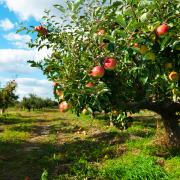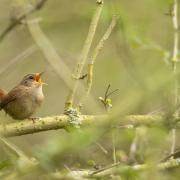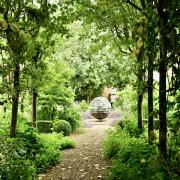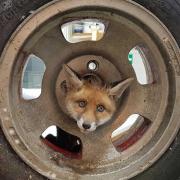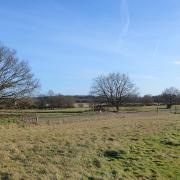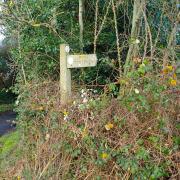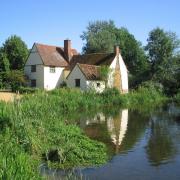In the UK, we have over 240 species of solitary bee and 24 species of bumblebee. Surprised? You’d better bee-lieve it! But does the difference between wasps and bees make your head buzz round?

Honeybee – Social insects that live in hives made up of thousands of workers. They have a distinctive barrel-shaped body and don’t have a thin middle section like you see in wasps. Large, hairy eyes and hairy bodies help them carry lots of pollen as they move from flower to flower. Honeybees do sting occasionally, but only if they feel threatened. Remember, honeybees are defensive, not aggressive.

Bumblebee – The most common of these species is the common carder bee. Fluffy brown and orange bodies contrast with darker bands around their abdomen. The white-tailed bumblebee is identified by its lemon-yellow body bands and bright white ‘tail’. Similarly, the buff-tailed bumblebee has a buff-coloured ‘tail’ with darker yellow markings. Bumblebees rarely sting and your chance is reduced even further by avoiding provoking them. Be calm if you see a bumblebee, do not wave your arms or flap!

Solitary bee – Bees that do not live in colonies but live alone. Mason bees, wool carder bees, leafcutter bees and mining bees are all types of solitary bees – and all have slightly different variations of colour and shape. You can tell they aren’t wasps by looking at their bodies: are they hairy and furry? Solitary bees are fantastic pollinators, and they are the least likely to sting. As they don’t have honey to protect, they are relatively harmless – and males generally have no sting at all!

Wasp – Are they bright yellow with black stripes? Are they smooth and less hairy? Are they attracted to sweet foods? Do they have a high-pitched buzz? Most likely, you are looking at a wasp. The common wasp and German wasp are abundant species in the UK. Wasp stings tend to be more painful than bees, giving them a bad reputation. However, wasps will usually only attack if they feel threatened. There are over 7,000 wasp species in the UK and are important for balancing our ecosystem as they keep our insect population in check.

Hornet – The European hornet is the UK’s only native hornet species, and the largest of our social wasps. Their bodies are yellow with dark brown markings, but their sting is more pronounced than common wasps, despite being less aggressive. They pose no threat to us. However, Asian hornets, a smaller, invasive species, threaten the UK’s honeybee population – just one hornet can kill up to 50 bees per day. Their sting is long enough to puncture thick clothing, and they are fiercely defensive of their nests. Their bodies are almost entirely dark, with fine yellow strips, whereas European hornets’ bodies are predominantly yellow.
How to help bees in your garden this summer:
There are many ways you can support our buzzing friends this season. Planting native wildflower patches with plenty of flower species ensures that bees have pollen-rich flower sources to find wherever they go. Bee favourites include foxgloves, alliums, heather, lavender and buddleia. A bee hotel can be made or bought and solitary bees will thank you for this additional habitat for them to lay their larvae. They don’t live in hives, instead, they search for holes in deadwood, burrow in sandbanks and nest where they can. Don’t forget, bees need water too. A little bee bath will help them rest and replenish before they continue their busy days. A shallow dish with half-submerged stones will allow bees to stop and drink. Water helps aid bees with digestion and cools down the temperature of their hive, in the case of honeybees.



